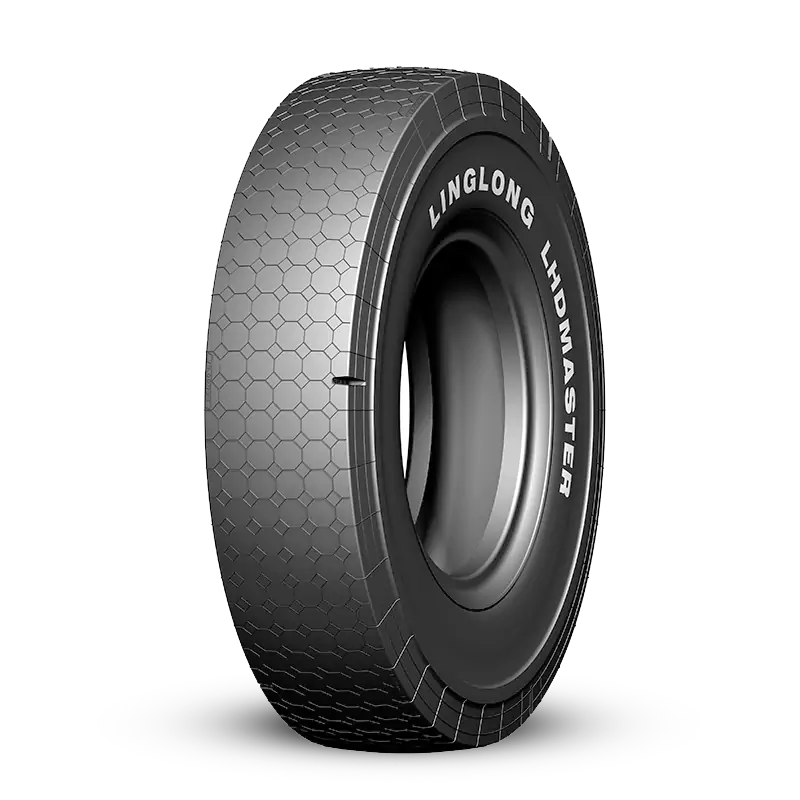Key Features of Radial OTR Tires
2024-06-05
Radial Off-The-Road (OTR) tires are specialized tires designed for use in demanding environments such as mining, construction, and other heavy-duty applications. They are engineered to provide durability, traction, and stability on rough terrains. The "radial" aspect refers to the construction of the tire's casing, where the cords (or plies) are arranged perpendicular to the direction of travel, which offers several performance advantages over bias-ply construction.
Key Features of Radial OTR Tires
1. Radial Construction:
- Casing Plies: The casing plies run at a 90-degree angle to the direction of travel, from bead to bead.
- Steel Belts: Radial tires often incorporate steel belts beneath the tread, providing additional strength and puncture resistance.
2. Durability:
- Robust Design: Constructed to withstand heavy loads, sharp rocks, and other challenging conditions.
- Heat Dissipation: The radial design helps dissipate heat more effectively, reducing the risk of tire failure due to overheating.
3. Traction and Stability:
- Tread Patterns: Designed to provide excellent traction on various surfaces, including loose gravel, mud, and hard-packed earth.
- Stability: Enhanced sidewall flexibility and strength improve ride comfort and stability, especially under heavy loads.
4. Longevity:
- Wear Resistance: The radial design often results in more uniform tread wear, extending the tire's lifespan.
- Cost-Effective: Although the initial cost can be higher, the longer life and improved fuel efficiency make them cost-effective over time.
Advantages of Radial OTR Tires
1. Improved Ride Quality:
- Flexibility: Radial tires provide better shock absorption due to their flexible sidewalls, offering a smoother ride on rough terrains.
- Comfort: Reduced vibration and improved handling characteristics enhance operator comfort.
2. Enhanced Performance:
- Fuel Efficiency: Radial tires typically offer lower rolling resistance, improving fuel efficiency.
- Traction: Superior grip and stability on various surfaces enhance operational efficiency and safety.
3. Increased Load Capacity:
- Strength: Steel belts and robust construction allow for higher load capacities, making them suitable for heavy machinery and equipment.
- Safety: Improved load distribution reduces the likelihood of tire blowouts, enhancing overall safety.
Applications of Radial OTR Tires
1. Mining:
- Heavy Equipment: Used on haul trucks, loaders, and excavators operating in mining sites where durability and traction are crucial.
- Harsh Conditions: Designed to handle sharp rocks, deep ruts, and other challenging mining conditions.
2. Construction:
- Earthmovers: Ideal for bulldozers, graders, and other construction vehicles working on uneven and rough terrain.
- Site Work: Provide stability and durability for heavy machinery operating on construction sites.
3. Agriculture:
- Tractors and Harvesters: Used on agricultural machinery that requires high load capacity and traction in fields and off-road conditions.
4. Forestry:
- Logging Equipment: Suitable for skidders, forwarders, and other forestry equipment that operates in muddy and rugged environments.
Maintenance and Best Practices
1. Regular Inspections:
- Visual Checks: Inspect for cuts, punctures, and other damage regularly.
- Tread Depth: Monitor tread depth to ensure optimal performance and safety.
2. Proper Inflation:
- Pressure Maintenance: Maintain the correct tire pressure to ensure even wear and optimal performance.
- Load Adjustments: Adjust tire pressure according to load requirements and environmental conditions.
3. Alignment and Rotation:
- Wheel Alignment: Ensure proper wheel alignment to prevent uneven wear.
- Tire Rotation: Rotate tires periodically to promote even wear and extend lifespan.
4. Cleanliness:
- Debris Removal: Regularly remove debris such as rocks and mud from the tire tread to prevent damage.
5. Storage:
- Proper Storage: Store tires in a cool, dry place away from direct sunlight and chemicals when not in use.
Common Challenges and Solutions
1. Punctures and Cuts:
- Robust Design: Opt for tires with reinforced sidewalls and tread to minimize the risk of punctures and cuts.
- Regular Checks: Conduct frequent inspections to catch and address damage early.
2. Overheating:
- Heat Dissipation: Ensure proper inflation and load management to help dissipate heat.
- Quality Materials: Choose tires made from materials designed to withstand high temperatures.
3. Uneven Wear:
- Rotation: Regularly rotate tires to promote even wear.
- Alignment: Maintain proper alignment to prevent uneven tread wear.
By understanding the features, advantages, applications, and maintenance of radial OTR tires, operators can ensure optimal performance and longevity, enhancing the efficiency and safety of their heavy-duty machinery and equipment in demanding environments.



